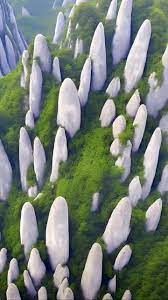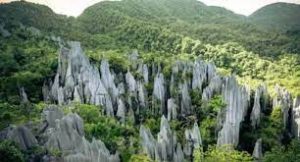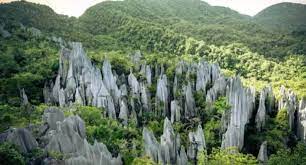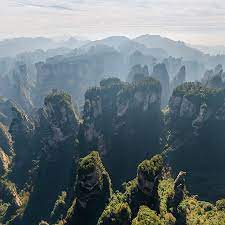Ivory Hills China
Overviews Ivory Hills China

What is Ivory Hills China?
A natural treasure known as the Ivory Mountains lies in the beautiful karst formations of China’s Guangxi Province. Aptly named for its resemblance to Ivory tusks, this spectacular landscape has fascinated tourists and photographers for centuries.
Geological Masterpieces: Formed by millions of years of erosion, the Ivory Hills China is a unique geological formation. Its towering limestone peaks rise dramatically from the surrounding plains, its Ivory slopes clad in verdant vegetation. The River Lee, flowing through the valley below, adds an air of tranquility to the setting.
A paradise for nature lovers: Ivory Hills China is a paradise for outdoor enthusiasts. Hiking trails wind through the hills and offer beautiful views of the surrounding countryside. Visitors can explore hidden caves, encounter diverse wildlife, and even take a relaxing boat trip on the River Lee.
Cultural Carpet: Apart from its natural splendor, Ivory Coast is also rich in cultural significance. The region has been inhabited by various ethnic groups for centuries, each of which has left its mark on the region’s traditions and folklore. Tourists can explore charming villages, witness traditional craft exhibitions, and immerse themselves in the rich culture of the region.
A journey for the senses: A trip to the Ivory Hills China is a feast for the senses. Green hills glisten in the golden sunlight, while the fresh mountain air invigorates the soul. The gentle sound of the river Li along with the chirping of birds creates a symphony of natural sounds.
Ivory Hills: A must-see for the soul: Whether you are a seasoned adventurer or a nature lover looking for relaxation, Ivory Hills China has something for everyone. This enchanting destination promises an unforgettable trip and leaves memories that will last a lifetime.
Plan your Ivory Hills adventure: The best time to visit Ivory Hills China is spring (March to May) or autumn (September to November), when the weather is pleasant and the crowds are less. Many tour operators offer guided walks and boat trips, or you can explore the area on your own. Remember to bring comfortable shoes, sunscreen, and a hat, as the weather can be quite sunny. Most importantly, come with an open mind and a sense of wonder and prepare to be mesmerized by the magic of the Ivory Hills.
So if you’re looking for an escape from everyday life, travel to the Ivory Hills of China. Let yourself be mesmerized by the enchanting beauty and discover a hidden gem that will take your breath away.

Highlights of Ivory Hills China
Spectacular scenery: Ivory Hills China is known for its spectacular karst formations, including towering limestone peaks, lush vegetation, and the meandering Li River.
Hiking and Exploration: Many hiking trails in the Ivory Hills offer spectacular views of the surrounding countryside. You can also explore hidden caves and take a boat trip on the River Lee.
Cultural Experience: The region has been inhabited for centuries by different ethnic groups, each with its own unique traditions and culture. You can visit charming villages, see exhibitions of traditional crafts, and learn about the history of the area.
Wildlife: Ivory Hills China is home to a variety of wildlife including monkeys, snakes, and birds. You may be lucky enough to see some of these animals during your trip.
Relaxation: Ivory Hills China is a great place to relax and unwind from the hustle and bustle of city life. Take a boat trip on the River Lee, have a picnic in the hills, or just enjoy the sun and the views.

Here are some additional tips for planning your trip to the Ivory Hills China:
- The best time to visit is spring (March to May) or autumn (September to November) when the weather is pleasant and the crowds are less.
- There are several airports serving Guangxi Province and you can reach the Ivory Hills by train, bus, or private car.
- Guided walks and boat trips are available, but you can also explore the area on your own.
- Make sure you bring comfortable shoes, sunscreen, a hat, and a water bottle.
Approximate location of Ivory Hills,China
Located in Guilin, Guangxi, Ivory Hills China is famous for its majestic and majestic hills, valleys, and rural environment. The city is believed to be home to a diverse population of diverse socio-economic backgrounds. The city is often described as a shining representation of Chinese tradition, culture, and lifestyle.
Ivory Hills China Real or Fake?
China’s Ivory Hills are AI-generated photos and videos. It is similar to Gulung Munu National Park in Malaysia. The national park is a protected area, tropical forest in Malaysian Borneo.
Guilin, Guangxi, China
Located in Southern China’s Guangxi Zhuang Autonomous Region, Guilin is a beautiful place known for its stunning natural scenery. The city is known for the mesmerizing karst mountains surrounding the River Lee, creating a landscape that has inspired poets and artists for centuries.
Check out the tourist attractions in Guilin Guangxi below.
Lee River Cruise
The Li River originates in Maor Shan (Mountain Cat) in Xing’an County, north of Guilin, and flows south for about 437 km, passing through Guilin City, Yangshuo County, Pinglei County, Zhaoping County, and finally Wuzhou. flows into Shi River (West). It is the largest and most beautiful natural area in China and attracts thousands of tourists every year.
The Li River is the main river system of northeastern Guangxi. The 83 km route between Guilin and Yangshuo is the most scenic route. It has the distinction of being the “Gallery of River Art”.
The Li River Cruise in Guilin is a must-do. The tour includes limestone peaks, rice paddies, and traditional villages. The scene of the famous 20 yuan bill comes to life as you sail along the meandering river.
Reed Flute Cave
Located in the beautiful Ivory Hills China, the Reed Flute Cave is a testament to the harmonious confluence of nature’s beauty and human creativity. Also known as “Ludi Yan” in Chinese, this subterranean wonder is a fascinating maze of limestone formations and otherworldly lights that appeal to adventurers and history buffs alike.
Reed Flute Cave, named for the green reeds that grow at its entrance, represents a surreal world beneath the earth’s surface. As you enter, you are immediately greeted by an orchestra of stalactites and stalagmites that took centuries to form. Created by the slow dance of water and mineral deposits, these natural sculptures create an otherworldly landscape that stimulates the imagination.
The cave walls bear witness to a rich history, as royal inscriptions dating back more than 1,300 years tell the stories of ancient explorers and poets who sought refuge in the cave. These inscriptions, written in different scripts, show the cultural importance of the Reed Flute Cave throughout the dynasty.
According to legend, the cave got its name not only from the reeds surrounding its entrance but also from the ancient Chinese tradition of making musical instruments out of reeds. The cave’s acoustics, highlighted by its unique geological features, make it an ideal location for panoramic performances. For centuries, musicians and poets have been drawn to Reed Flute Cave and composed the melodies that reverberate in its cavernous chambers.
Elephant Trunk Hill
This landmark resembles an elephant drinking water from the River Lee. This place is not only a natural wonder but also shrouded in local folklore. In addition, the mountain is one of the landmarks of Guilin.
Head to the heart of Elephant Trunk Mountain, where the Water Moon Cave catches the eye. Discover the ancient inscriptions and stone carvings that adorn the cave walls, telling stories of a bygone era and giving a glimpse of the region’s rich cultural heritage.
We scale new heights when we explore Paxian Pagoda atop Elephant Trunk Mountain. Discover the spiritual significance of this pagoda and enjoy stunning views of Guilin and the Li River, making it a must-see for locals and tourists alike.
Seven Star Park
A large park with many attractions including Seven Stars Cave, Camel Hill, and Flower Bridge. It offers a combination of natural beauty and cultural attractions.
Enter a world where karst hills rise majestically like ancient guardians, their peaks reminiscent of the seven stars that give the park its name. Lush vegetation combined with crystal clear lakes form a mesmerizing tapestry, making it a paradise for nature lovers and photographers.
language
Mandarin Chinese is the official language of Guilin. Although English is understood in tourist areas, it is useful to learn some basic Chinese phrases to enhance your experience and to communicate with the locals.
The season
Guilin has a humid subtropical climate with hot summers and mild winters. The best time to travel is spring (March to May) and autumn (September to November), when the weather is pleasant and the landscape vibrant. Compared to northern China, summers (June to August) can be hot and humid, while winters (December to February) are cooler but still mild.
Eat well
Enjoy Guilin’s diverse culinary offerings, heavily influenced by Guangxi’s ethnic minority groups. Local specialties include Guilin rice noodles, delicious river snails, and delicious rice cakes. Live food markets offer sensory delights and showcase the region’s gastronomic richness.



